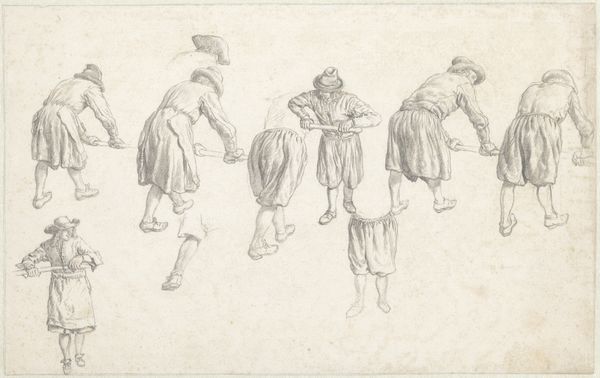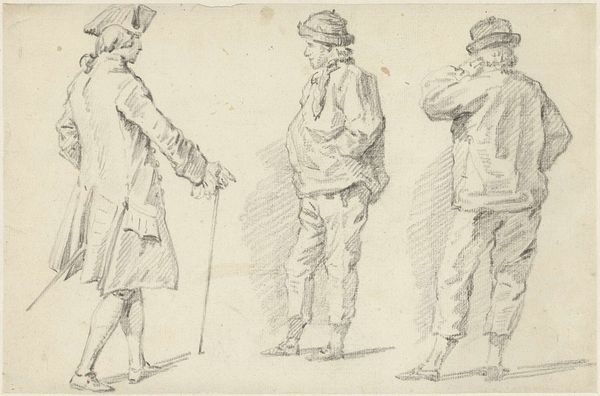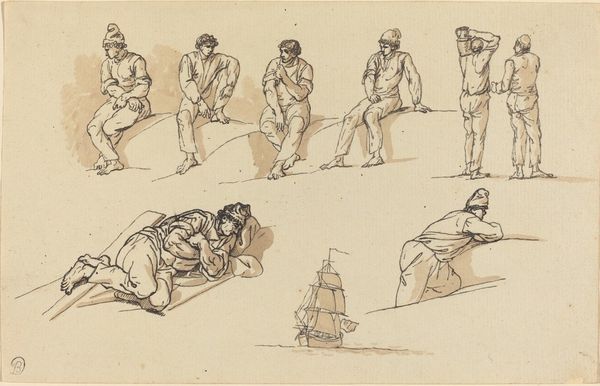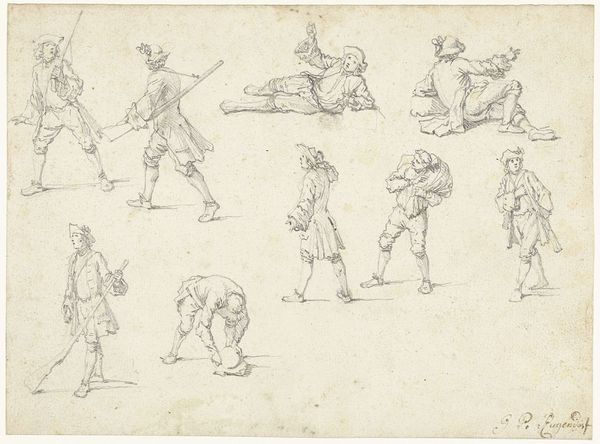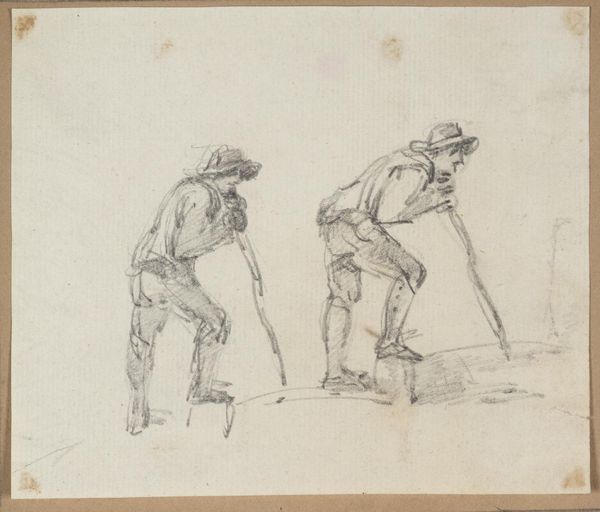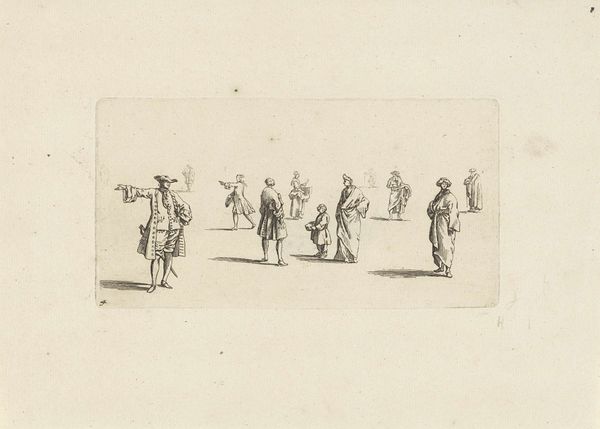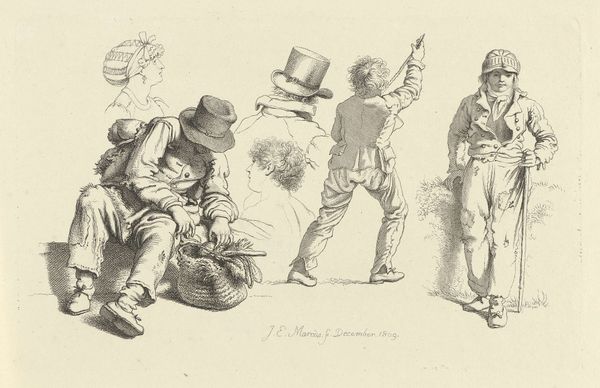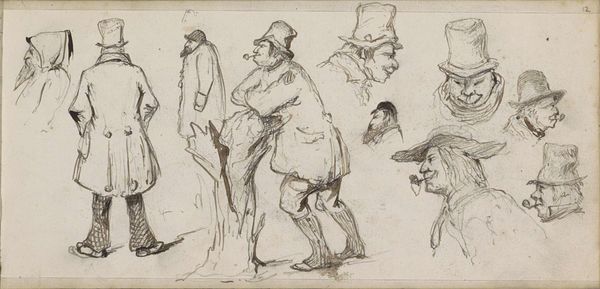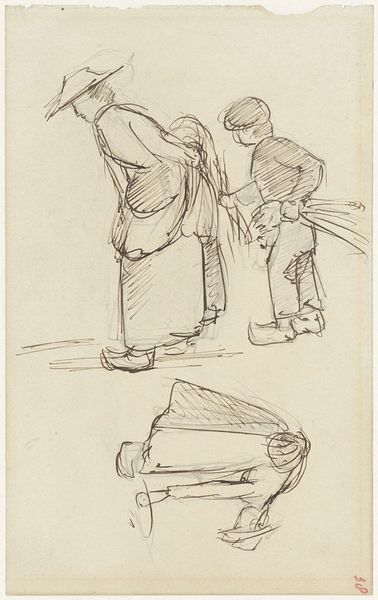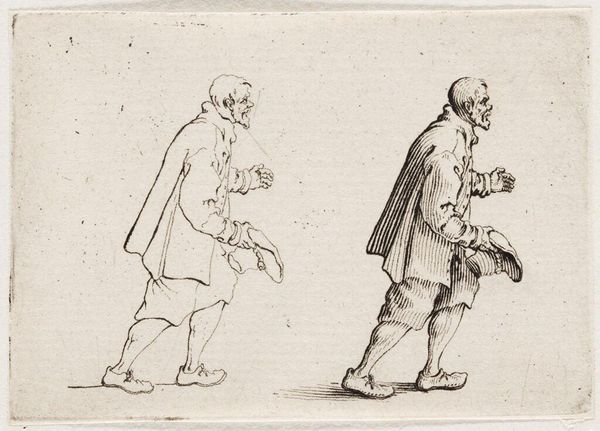
drawing
#
drawing
#
neoclassicism
#
landscape
#
figuration
#
romanticism
#
line
#
history-painting
#
academic-art
Copyright: Public Domain: Artvee
Curator: Let’s examine this drawing entitled "Ten Men Pulling on Ropes". It is attributed to Claude-Joseph Vernet. Editor: My immediate response is to the formal arrangement; the artist’s decision to mirror the figures creates an interesting rhythmic structure across the page. The shades seem well thought through; they do not just add depth and volume, but they enhance that sense of structure, as well. Curator: Indeed, there's a clear exploration of labor and exertion here. Given Vernet's context, we can explore how his artworks were deeply influenced by Enlightenment ideas and Neoclassical aesthetics. The scene subtly hints at social class; it invokes themes of the working class and its relationship to productivity. Editor: Looking at the artist's choices closely, his employment of academic art and neoclassicism—the emphasis on line, for example—provides a structured visual language, one that gives way to the overall stability of the image. It helps render their intense efforts in a refined manner. Curator: And, as we see with our contemporary lens, such visual language can also imply issues related to exploitation, and the complex relationship between labor, power, and societal expectations in the era. The men are captured as subjects intertwined in this shared endeavor, and as a social commentary on collective physical effort and perhaps the lack of agency they experience as individuals within it. Editor: Yes, there is an obvious sense of power here. But in focusing on individual elements, I see how the figures' placement and subtle variations create both unity and visual interest. Vernet expertly uses chiaroscuro to model their forms and their movement; that generates dynamism and visual depth on this monochromatic palette. Curator: Well, examining this drawing prompts insightful questions on labor representation and collective identity during the Enlightenment period, inviting reflection on themes such as class and the nature of work as social performance. Editor: By drawing our attention to Vernet's calculated compositional decisions and masterful modeling, it allows us to decode an image with lines and tonal precision; in doing so, we come to appreciate its complex visual order.
Comments
No comments
Be the first to comment and join the conversation on the ultimate creative platform.
